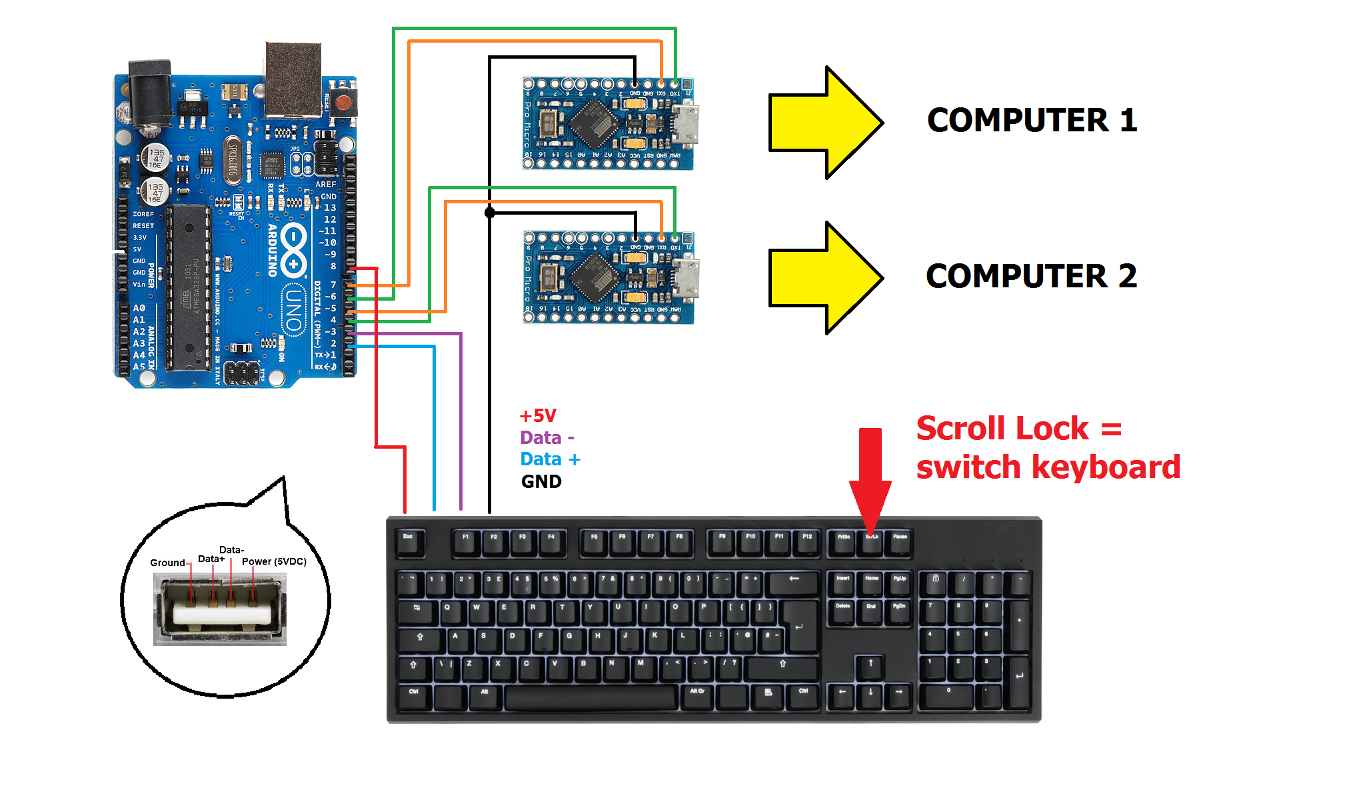- The Micro board is similar to the Arduino Leonardo in that the ATmega32U4 has built-in USB communication, eliminating the need for a secondary processor. This allows the Micro to appear to a connected computer as a mouse and keyboard, in addition to a virtual (CDC) serial / COM port.
- The Pro Micro is a tiny, Arduino-compatible microcontroller centered around an ATmega32U4 - an 8-bit AVR very similar to the ATmega328 with one huge caveat: The 32U4 comes equipped with a full-speed USB transceiver. So now, when you connect the Arduino to your computer, they're connected directly over the USB bus (excuse my RAS).
Arduino Micro Keyboard Manual
Step 1: Raspberry Pi and Arduino Setup. The virtual peephole is made of 2 distinctive parts: a Raspberry Pi (with a small screen) and an Arduino Micro. The Raspberry Pi is connected to the internet and displays a website, that shows one random camera feed. There is a light sensor inside the peephole, to detect if it is open or closed.
(As the title indicates, this is about the Arduino Leonardo Keyboard Library. I would have put it in another section of the forum, but the link in the Keyboard Reference sent me here.)
Good afternoon forum,so, I am trying to use an Arduino Micro to send keystrokes to the BIOS so that I can automate a 'boot from USB-Stick' procedure without having to connect keyboard and screen. I am testing this in a text editor window, and the Micro is 'typing' the things I want. I added a pushbutton to the Micro so that I can 'start' the procedure with proper timings, the L13 feedback shows me that the software on the Micro is working well and timings are okay, but the BIOS does not recognize any key presses.The system (mainboard/BIOS) generally works with USB Keyboards. I have a USB-Keyboard connected which I can use for the BIOS, and I have also tried the Micro with my USB-Keyboard disconnected.


I suppose this is related to the various emulation modes that exist in this arcane part of PCs/BIOS. I have had it in the past with other keyboards and other BIOSes, that a USB Keyboard/or a Keyboard on an adapter would work well in the booted Operating System, but would act up/not be recognized in BIOS/early boot.
The same problem is described here on StackOverflow: https://stackoverflow.com/questions/12682429/generic-keyboard-emulation-using-arduino-leonardo but there is no solution/no accepted answer. I have also tried to set the deviceSubClass to 1 as suggested, but no change (still works in text editor, still not in BIOS).
Any helps/hints would be greatly appreciated, thanks for helping.
Arduino Micro Keyboard Diagram
Reasons why I try/have to do it this way:- I do not want to boot from the USB Stick on every single boot. Only sometimes. So I cannot just leave the stick inserted and have the system boot order configured to the USB flashdrive.- As soon as I remove the USB Stick, it disappears from the Boot Device List, so I cannot have the system automatically boot from USB if present or continue to boot regular if not.- I cannot change the mainboard hardware, the BIOS or the BIOS version, so (U)EFI is not an option atm.
Now why didn’t we think of this? While building a dactyl manuform — a semi-ergonomic split keyboard — [dapperrogue] had the life-changing epiphany that keyboards can be any shape or size, as long as there is room for wiring and a microcontroller inside. [dapperrogue]’s first foray into the world of fictional ordnance came in the form of an F-bomb — a round macro keeb made in the classic round explosive shape and covered with function keys. Building on the explosive feedback from that, [dapperrogue] built this bomb of a pineapple keeb, the only anti-personnel factor being the clickiness of the key switches.
This groovy grenade has 25 keys total, 24 of which are in a 4×6 grid around the body. The 25th key, the best one, is hiding under the lever and you bet it can only be actuated by pulling the pin first. We love the use of the lever because it makes us think of Morse code keyers, which might be what we would use that switch for.
Inside is an Arduino Pro Micro running QMK and some skillful wiring. The entirely 3D-printed enclosure is in two main pieces that are connected with M3 screws, plus the top. If you want to pack one of your own, the STLs and firmware are out on GitHub. Just don’t take it to the airport.
Be sure to check out the demos after the break — in the stock firmware, every key types out a different onomatopoeic boom-type sound. Are you more of a pacifist when it comes to macro pad design? That’s understandable. We have plenty of different builds to admire.
